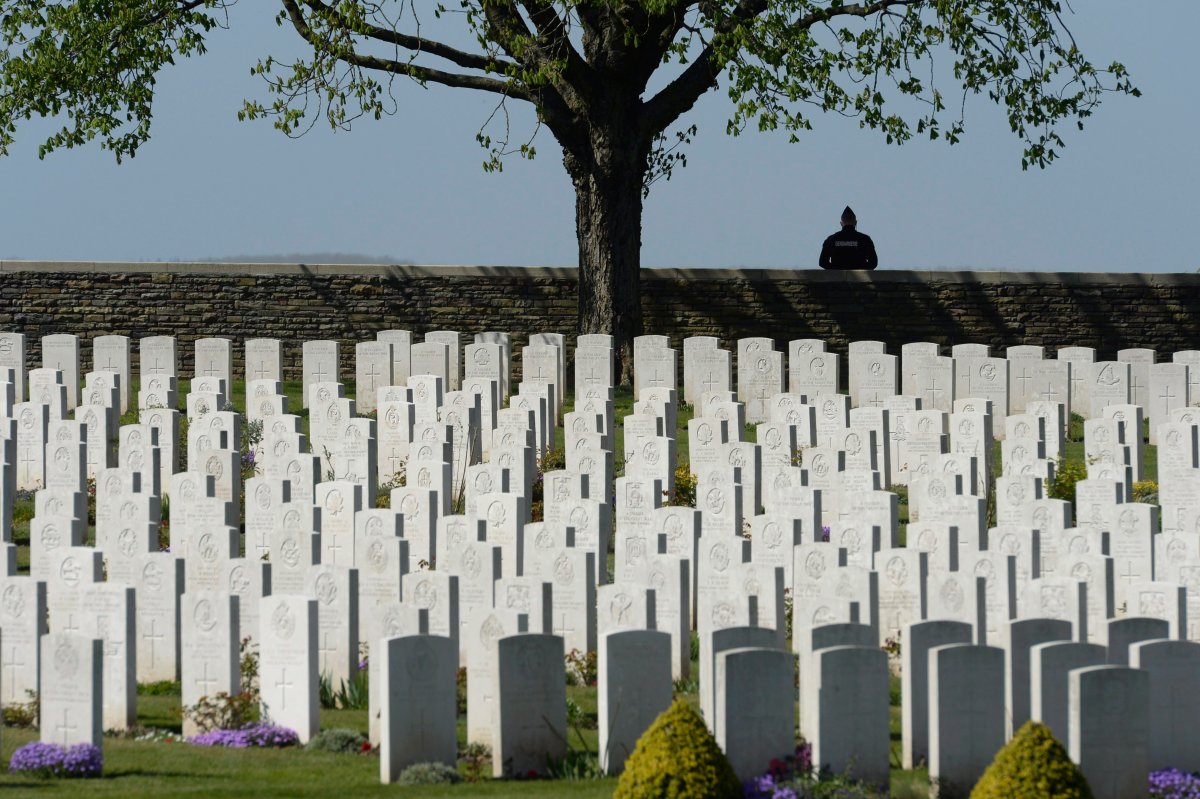TORONTO – After a search that spanned nearly a century, genealogists in Toronto have helped a Scottish family track down the unmarked grave of a relative who died after serving in the First World War.

Ian Hector Steven’s family knew that he emigrated to Canada from Glasgow in the early 20th century and had married.
They knew that Hector, as he was known, was wounded fighting with the Canadian military, that he won a medal for his service, and that he died shortly afterwards.
But for years they didn’t know the circumstances of his death, whether he left behind any children, or where he was buried.
READ MORE: Vimy Ridge memorials taking place across Canada
The search for Hector’s descendents began shortly after his death. His sisters posted notices in Canadian newspapers, hoping his widow would get in touch, but they never heard back. When the Second World War broke out and Canadian troops were sent to Europe, Hector’s family hoped one of his descendents might seek them out.
“When the war ended in 1945 and no young Canadian had come and rattled the door and said that he was the son of or the daughter of Ian Hector, the matter just went dead within the family,” said Hector’s nephew, Rev. Harold Steven. Aside from one fruitless visit to the Parliament buildings in Ottawa while he was in Canada visiting his son at McGill University about 10 years ago, Steven had essentially given up on finding his uncle — until about 18 months ago.
- UP Express stops in Toronto reduced as Metrolinx shakes up GO train service
- Driver missing in Ontario after police say vehicle was pulled into creek
- Ontario may not meet LTC direct care target due to staff shortages: document
- Roadblock cleared: Ontario’s Highway 413 moving forward after governments reach agreement
By chance, Steven, now in his mid-80s, came across an article in The Scots magazine about a new history project at the University of Edinburgh. Researchers were looking for the “war dead who had slipped through the net of recognition,” as he put it. A historian at the university put him in touch with another Scottish researcher, who found that Hector had lived in Toronto. When Steven contacted the Toronto city clerk’s office, they suggested he get in touch with Mount Pleasant Group of Cemeteries, which could check if Hector was listed on any of their 10 sites.
READ MORE: Canada’s complicated history with scientific freedom
He wasn’t — but the manager of the cemetery’s genealogy team, Sue Henderson, was intrigued. She got in touch with Heather Ioannou, who she knew from the Toronto branch of the Ontario Genealogical Society. Ioannou, who has lived in Canada for decades but was raised in Scotland, was equally interested. She searched through Ontario’s vital statistics archive and found a record of Hector’s 1918 death in the York County Death Registry.
“I sent it to Sue, and we both went to Google Maps, and it was like somebody smacking us over the head,” she said. The address listed as the site of Hector’s death was just down the street from St. John’s Norway Cemetery in Toronto’s east end.
Ioannou and Henderson were able to confirm with the cemetery’s staff that Hector was in fact buried in St. John’s. Finally, Steven had an answer to the question his family had been unable to answer for decades. “They found him,” he said.
“I was thrilled to bits.”
That discovery allowed Ioannou and Henderson to rapidly uncover more information: the precise date and location of Hector’s arrival in Canada (he arrived in Quebec’s Eastern Townships in May 1913), his cause of death (bronchial pneumonia after influenza, sustained as a result of a military injury). War diaries from his regiment, discovered by Ioannou, showed that Hector had fought as part of Canadian expeditionary forces in France.
Hector was buried with his wife, an English woman named Evie Lacey, who had died of the Spanish flu 11 days after her husband. The grave was unmarked because it belonged to Lacey’s mother, who likely couldn’t afford a headstone, and who returned to England shortly after her daughter’s death.
Because the grave’s deed was registered to someone outside the Steven family, they weren’t legally allowed to set up a headstone. So Steven contacted the Commonwealth War Graves Commission, which ruled that because Hector’s death was related to his war injuries, he was eligible for a military headstone.
This afternoon, the Commonwealth War Graves Commission will honour the soldier by placing a headstone on his grave during a ceremony at St. John’s Norway Cemetery.
Ioannou says her work isn’t over. The Ontario Genealogical Society searches for war deaths “literally every day,” she said.
“There are some families who never know what happened to their loved one.”



Comments